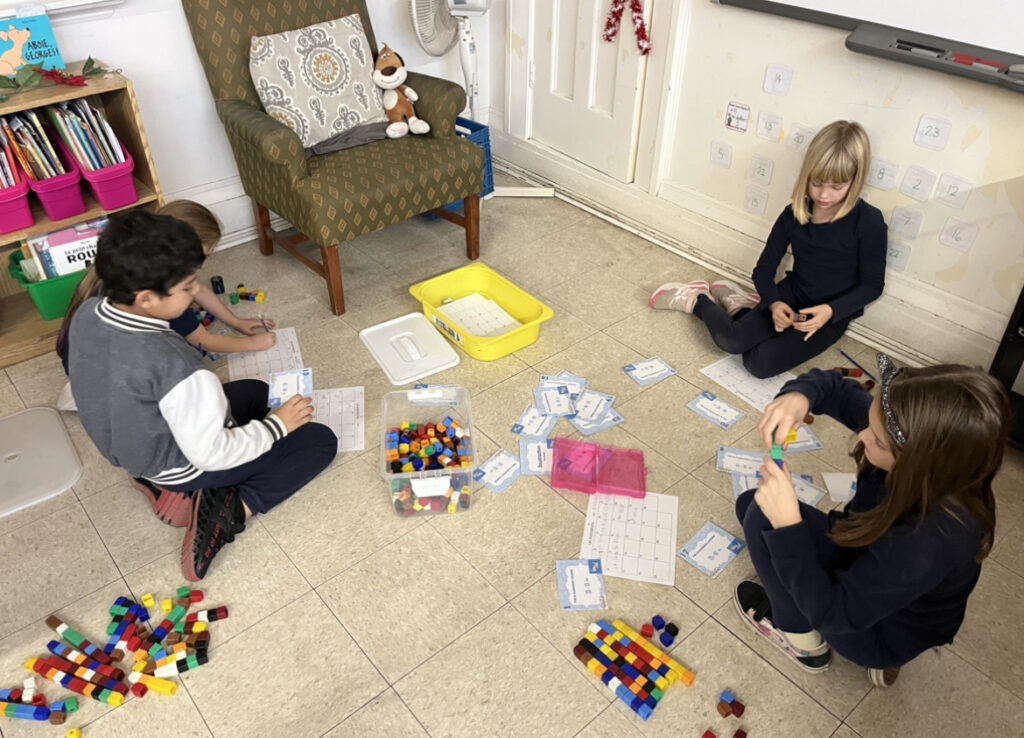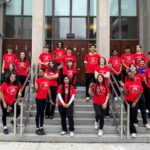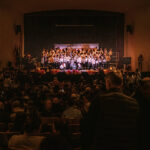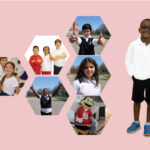The English Montreal School Board (EMSB) is celebrating le Mois du français à la CSEM this January. Special events are taking place across the network to showcase the strength of its French programs and to provide a glimpse into how French is integrated into everyday life at EMSB schools year-round.
With the rise in requirements in French competencies at the CEGEP level in coming years, parents want to know their children will be prepared.
The EMSB offers three models of French instruction at the elementary level, followed by a choice of three programs (plus an international student program) in high school. “No matter the school they choose, when they graduate, they are ready to enter into post-secondary education and their career fields as functionally bilingual students,” said Anna Sanalitro, director of Educational Services with the EMSB.
Research shows that children have a natural ability to learn languages other than their mother tongue. The younger the person, the easier to learn a new language, and form the accent. In immersion settings, where classes besides the French language course are taught in French, students have greater opportunities to express themselves in the second language, according to a report commissioned by the EMSB on immersion education by Susan Ballinger with McGill’s Department of Integrated Studies in Education. The “authentic, meaningful use of a second language is consistently associated with advantages for learning,” she writes.
Some EMSB elementary schools have dual streams, such as Edward Murphy Elementary School in Hochelaga-Maisonneuve, which offers an English core program along with French immersion. Other schools have special programs, such as Michelangelo International Elementary School in Rivière des Prairies, a bilingual school that also offers the International Baccalaureate program. Gerald McShane Elementary School in Montreal North provides the Sports Concentration program in French, while Pierre Elliott Trudeau does its robotics course in French.
Special events to take place in January – and all year round
Special events have been planned for January to mark le Mois du français à la CSEM. However, preparation for other annual events taking place throughout the year is in the works, such as the EMSB Storytelling Festival, which takes place in early spring. During “What’s Your Story? / Raconte-moi ton histoire !” students, chosen from their own school’s storytelling event, tell true or original stories aloud to an audience. Half the stories will be in French. “It is so wonderful to see so many anglophone students stand up and tell their stories in French,” said Julie Tytler, Pedagogical Consultant, Elementary English Language Arts. New this year is a website, with a dedicated French section for teachers to use with participating students, as well as the distribution of the card game La fabrique à récits as an aide to Grade 6 students in building their stories.
At Willingdon Elementary School in NDG, the place of French in the storytelling Festival is very important. Every year, Grade 4, 5 and 6 students take part in the art oratoire in French and storytelling in English, culminating with two winners from each class who present their stories in the final school competition. The gold medallist then represents the school at the Board’s springtime festival.
In the fall, elementary school students and their music teachers were challenged to a school board-wide contest to write and perform a jingle to celebrate the theme of le Mois du français à la CSEM.
But it’s really each school day and the teacher education initiatives that make the French instruction so strong at EMSB.
EMSB elementary schools: The road to bilingualism
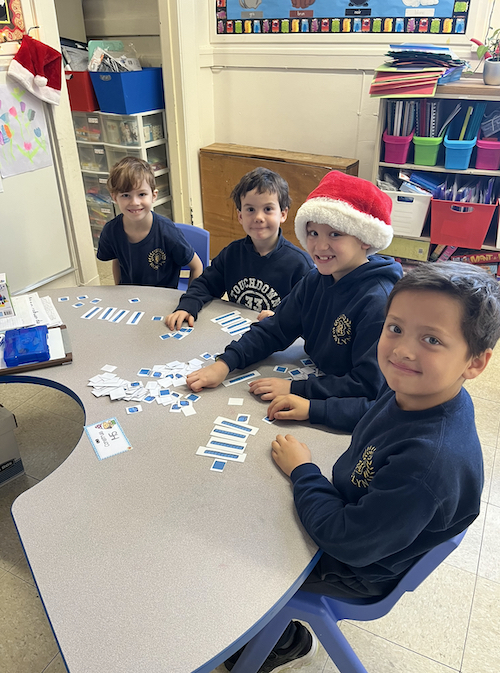
Elementary schools at the EMSB offer one of three models of French instruction, with some schools offering dual streams. The English Core model is 68 percent of instruction in English and 32 percent in French. The Bilingual model has an equal part French instruction to English instruction. French Immersion schools offer 68 percent of instruction in French.
Besides courses on the French language itself, other subjects can be taught in French. In Cycle 1 in French immersion schools, for example, French teachers also teach math. In Cycles 2 and 3, besides the French language, other subjects are often taught in French. Some schools have as social sciences, arts, sciences or ethics provided in French instruction, while others have physical education and music in French.
Teachers in several schools have been using “centres” as a way to teach the competencies. It has proven to be a way for teachers to get to know their students and to adapt their teaching to their needs. At Roslyn, for example, a second-grade class has been enjoying working in centres. Here the students work independently on many challenging activities while their teacher does guided reading, writing or math with small groups of students.
French-language consultants play a valuable role supporting teachers
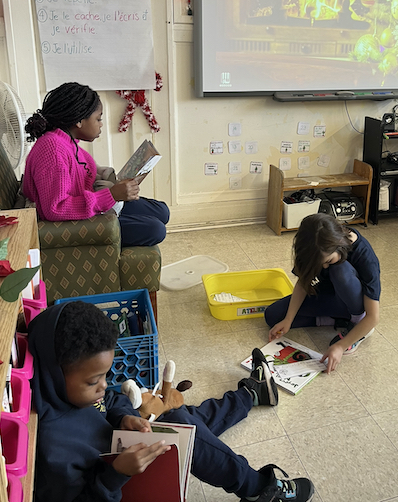
The EMSB has three full-time French consultants, who provide pedagogical support to French teachers across its 34 elementary number schools. Along with their most important role of offering training, professional development workshops and guidance in teaching the competencies outlined in the Quebec Education Program, Marie-Claude Bergeron, Sonya Jean and Anik Malenfant also create innovative projects throughout the year and work extensively with new teachers newly graduated and those who are just starting to teach French.
One of their ongoing projects is to consistently add new resources to their website, Le français au primaire. Here, teachers and students can find a wide variety of resources, activities and other information.
Also online is the Biblius.ca, offered through EMSB’s Virtual Library. This site provides the EMSB community with access to some 400 titles from the Quebec government and over 1,000 titles from EMSB’s own library. “This is growing all the time,” said Ms. Jean. “The EMSB has been curating an incredible collection of digital books that are available 24 hours a day to our community.”
Funding from a recent Professional Development and Innovation Grant from the Leadership Committee for English Education in Québec has set in motion a project involving four teachers from Our Lady of Pompei, Gardenview, Pierre de Coubertin and Willingdon, in collaboration with an assistant professor from UQAM and Université de Montréal, to create grammar activities using children’s books. “This is a first in Quebec,” said Ms. Malenfant
For the third year in a row, a professional development collaboration is scheduled to take place among the Grade 1 and 2 teachers from East Hill, Honoré Mercier, Pierre de Coubertin, St. Monica and Roslyn on creating Littérature jeunesse resources, designed to replace workbooks with authentic literary works for teachers to use in their classrooms.
The team is also welcoming and supporting new teachers from France, who have positions at Merton, Willingdon and Edinburgh elementary schools.
Supporting teachers has allowed them to witness how students can flourish learning a second language. “We encourage children to take risks – to try to speak French and be proud of it, even if they make mistakes at first,” said Ms. Bergeron.
The richness of learning French in preschool
Once a long-time Kindergarten teacher herself, Connie Cassetta, now Preschool Education Consultant for the EMSB, said that she has witnessed an amazing progression in children learning French in early immersion. “Children who started their school year not speaking any French always left kindergarten proudly speaking the language!” she notes.
The immersion in French of preschool children happens with daily routines of singing, listening to stories, engaging in dramatic play and building basic vocabulary by naming the days of the week, learning the words for numbers and colours, as well as discussing the weather.
As consultant, Ms. Cassetta’s primary focus is to provide support to teachers, guiding them in implementing the Quebec Preschool Cycle program. With the intention of promoting school success, the mandate of the preschool education program is to foster the global development of all children and to take preventive action in order to support this development.
Play is the ideal way for children to learn and to develop to their full potential, she explained. “Even language is learned through play. Play allows children to develop their executive functions. While engaged in purposeful play children exercise their working memory, planning and organizing skills, as well as the capacity to communicate. They are questioning, imitating, observing and experimenting with the language they are immersed in. And, in a French immersion classroom, the child’s ability to express themselves in French becomes part of their natural progression.”
In French immersion and bilingual schools at the EMSB, math is taught in French in Kindergarten, Grade 1 and Grade 2. It switches to English for the remainder of the elementary school years.
Learning math in a second language can be seen as a barrier for some children, but it is actually an opportunity for both the teacher and the children in their classroom to be creative, explained Melika Lahrar, the EMSB’s Pedagogical Consultant for Preschool and Cycle 1 Mathematics. “It promotes teaching and learning in different ways.”
Sometimes children are shy to express themselves in a second language, which limits their participation in class. “Teachers have to go beyond the language to make sure children understand and can express their thinking,” explained Ms. Lahrar. “It doesn’t have to be done verbally. Many creative adaptations are used to teach math in a second language to encourage participation. Children should be able to express their thinking however they can. It can be by drawing a picture, playing a game or using toys or manipulatives.”
To help children learn new words related to math, teachers often use visual aids in the classroom, such as a “math wall” that provides a repertoire of words children can easily refer to.
A typical day for a Kindergarten child has math sprinkled throughout. And when the child has their Kindergarten in French, such as in bilingual or French immersion schools, they learn math concepts in French all through their daily routine. For example, it might be in the game they choose to play, during the morning routine when talking about the date on a calendar or it could be in the story the teacher chooses to read.
Parents who don’t speak French at home can benefit from communications with teachers and administrators in the language they’re most comfortable with, in many cases English, making it an effective setting for supporting their child’s needs and feeling a part of their education path.
In her consultant role, Ms. Lahrar often draws upon her experience as a Grade 1 teacher at an immersion school. “You don’t want to force a child to learn French. You want the motivation to come from within. By choosing an immersion school, parents are saying ‘it is important to learn French and we are doing so within the context of our own language,’” she said. “Even if bilingualism isn’t achieved right away, the children will draw on this education, and when they have a motivation and a purpose, it will all come into play.”
“My students all loved French,” she said of her years as a teacher. “But what we want the most is for our children is to love school. An immersion or bilingual program is a nice way to have a positive experience learning French while feeling à sa place,” she said.
Now as part of a team of EMSB preschool consultants, she wants parents whose children are on the cusp of elementary school to know that at the EMSB, there is a dedicated team who bring their skills and knowledge to support the French language learning and the global development of all preschool children.
Learning a second language through the arts
Nicolas Doyon is the EMSB’s Education Consultant, Fine Arts, Culture in school. He works with teachers and specialists in visual arts, drama, dance and music to fulfil the requirements of the arts competencies of the Quebec Education Program. He describes his work as “making bridges between the classroom and the cultural resources out there,” to which he adds artists, writers and organizations included in the Répertoire du patrimoine culturel du Québec, among others. It’s a way to apply what is being learned in school with real-life experience from artists in the field.
In the French immersion schools, arts classes are mostly taught in French up to Grade 6.
Teaching the arts to younger students in particular helps them learn a second language. “It’s easier to learn another language through play,” said Mr. Doyon. “It’s more authentic. The arts provide a playful way of learning French as a second language because of the opportunities to try out the language through the different forms. In drama, for example, children can have fun experimenting with word pronunciation, speed of delivery, rhythm and intonations. It’s a fun way to learn a new language without inhibition.”
One of the three competencies in the arts is appreciation. This calls for the student to be able to vocalize their feelings and thoughts about a work of art. Mostly this is done orally, and for elementary students who take their art classes with their homeroom teachers, it provides another way to practice expressing themselves in French while using the subject-specific vocabulary.
While students at all levels are treated to cultural workshops and outings in French, elementary students can also benefit from La Cabane à culture, a new program designed by the Centre de services scolaire de Montréal available to all elementary school teachers in Quebec schools this year. These are monthly rendez-vous online or in-person where students learn about a Quebec artist or writer. In October, a workshop on the opera was given by the Opéra de Montréal at Place des Arts, for example.
“In Quebec, we have our own large cultural repertoire to draw upon, giving educators lots of opportunity to expose students to the arts,” said Mr. Doyon.
There are many Culture à l’école workshops and performances being planned this year for EMSB schools, some taking place in January for EMSB’s Le mois du français.
They include a specialist on French-Canadian folk dances for children, France Bourque-Moreau, who will lead a workshop in Quebec and international danse folklorique to Michelangelo’s Kindergarten students; and puppet theatre company, Théâtre Tortue Berlue, is set to present Les savants flous along with a workshop to John Caboto’s Kindergarten classes.
Coronation Elementary School students will take part in a theatre workshop with Tina Milivojevic, and then with Chloé Varin, Quebec author and storyteller, who will do a storytelling and a comics workshop.
Just Gumboots, a South African percussion dance led by Just Aïssi, is taking place at Dunrae Gardens, while at Nesbitt Elementary School, Martin Langlais will lead Danses du monde.
At Laurier Macdonald High School, a special Slam event in French with MC June is scheduled to take place in February.
The path continues in high school
EMSB offers three programs of French instruction at the high school level to allow for a variety of competencies and interests. These are Ministère de l’Éducation programs and all three culminate with the writing of a ministry exam towards achieving the high school diploma.
Students who graduate from the English core program in elementary school often continue in high school in Français, programme de base. The aim is for students to graduate with the ability to interact in French, orally and in writing, with friends, teachers, and eventually employers and colleagues.
From the French immersion or bilingual elementary schools, where students learn other subjects in French besides the language itself, the path can be continued in the EMSB high schools that offer Français, programme enrichi. Students learn how to understand and produce a variety of texts in French, study French literary works from all over the francophonie and become familiar with Quebec culture. This enriched program prepares students to continue their post-secondary studies in French or to practice their profession in a Francophone environment.
The third program is Français, langue d’enseignement (FLE), which follows the same instruction as the French schools and aims for a mastery of the French language. It prioritizes the practise of oral and written French and infuses a deeper study into literary works from different eras, genres and styles while connecting past, present, local and international texts in the francophonie to broaden their cultural knowledge. Students who graduate from an EMSB high school with the FLE have the ability to easily continue to their studies in French in university, and they are sometimes exempt from an evaluation of French qualifications in some professional orders in Quebec.
In recent years, the EMSB has been growing its program, Français, international, for people newly arrived in Quebec who have eligibility to study in English. A growing clientele are international high school students who are learning French for the first time. Students learn numbers, alphabet, sounds, directions, household items in French – to be able to use the language in daily life.
We prepare our students to work or study in French
EMSB’s success rates in delivering the Ministère de l’Éducation program suggest that its students are well prepared to follow the ministry’s Français, langue seconde program at the CEGEP level, according to Anna Villalta, EMSB’s Assistant Director of Educational Services. “A lot of our teachers go above and beyond the Quebec Educational Program,” she said. “They understand the necessity to speak French, to be fluent in French. The expectations our teachers place on our students is much higher than meeting the requirements of the ministry programs.”
But, as important, explained Ms. Villalta, students graduating from EMSB and entering their post-secondary education are able to function in an environment where French is required, be it in their first job or perhaps even doing an internship in their field of study.
Post-secondary education in French becomes a viable option for EMSB students graduating with Français, langue d’enseignement, the most rigorous of the secondary school French programs. It also prepares them well for the French language requirements of certain professional orders in Quebec.
Discussions are underway among school boards and CEGEP administrations to explore student readiness in the post-secondary French requirements. In the meantime, “Our students are getting a good handle of French, while at the same time improving their English,” said Ms. Villalta. “The beauty of our immersion programs is that students can be fully immersed in the French language within an anglophone community. The values of their community continue to thrive as they learn alongside their peers – while being immersed in the French language and ultimately preparing themselves to go to work or continues their studies in the Quebec culture.”
About the English Montreal School Board
With a youth and adult sector population of more than 35,000 students, the English Montreal School Board (EMSB) is the largest English public school board in Quebec. Established on July 1, 1998, when the province created new boards along linguistic lines, the EMSB network consists of 77 schools and centres. For more details, visit the EMSB website at www.emsb.qc.ca.
